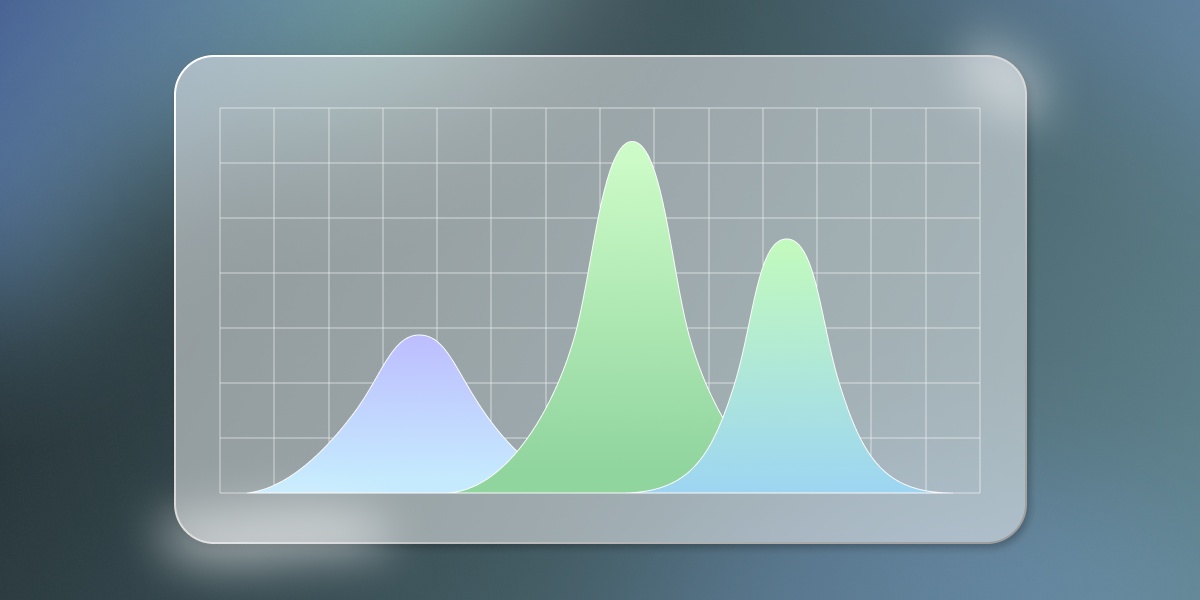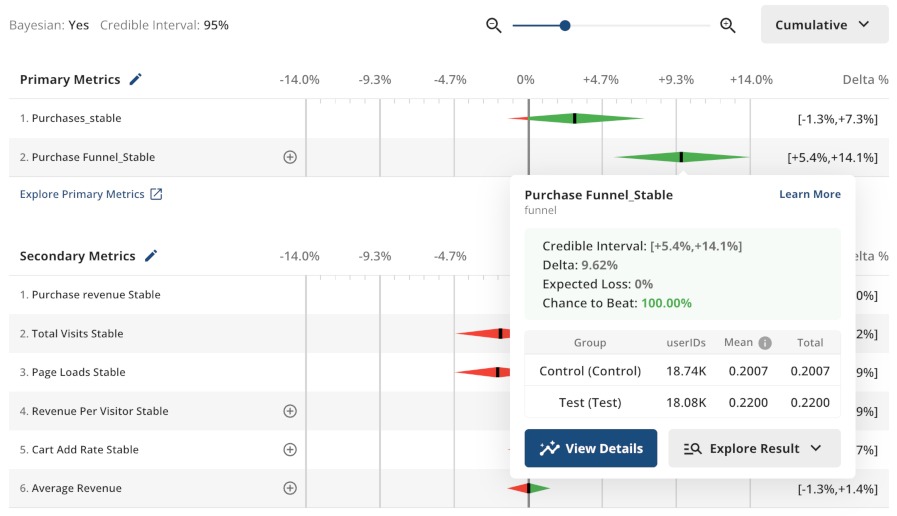
Where frequentist statistics assigns probabilities to data, Bayesian assigns probabilities to hypotheses.
Traditionally, A/B testing has been dominated by Frequentist statistics, which rely on p-values and confidence intervals to make decisions. However, there's another approach that's gaining traction for its intuitive nature and ease of interpretation: Bayesian experiments.
Bayesian A/B testing leverages a different statistical framework, one that incorporates prior knowledge and updates beliefs with new data.
This guide will delve into Bayesian experiments, exploring when and why you should consider using them over traditional methods. We'll provide you with a clear understanding of the Bayesian approach and its practical applications.
Why experimenters sometimes opt for Bayesian experiments
Small sample sizes: When you have limited data, Bayesian methods can be more robust since they can leverage prior information to make up for the lack of data.
Sequential analysis: Bayesian experiments are well-suited for situations where you want to look at the results continuously and potentially stop the test early.
Complex models: If you're dealing with complex models or multiple metrics, Bayesian methods can help manage the intricacies more effectively.
Prior information is available: If you have reliable historical data or expert knowledge, Bayesian experiments can use that information to improve the accuracy of the results.
Communicating with non-technical stakeholders: The intuitive nature of Bayesian results makes it easier to communicate findings to stakeholders who may not have a deep statistical background.
Statsig supports Bayesian experimentation
Setting up a Bayesian experiment in Statsig is a relatively simple process. Experiment result scorecards within Statsig are specifically designed to help you interpret Bayesian experiment results.

Understanding Bayesian experiments
In order to really understand why and when to use Bayesian experiments, it’s important to understand more about how it works. Bayesian statistics is based on Bayes' theorem, which describes the probability of an event based on prior knowledge of conditions that might be related to the event.
The benefits of Bayesian testing
Bayesian experiments offer several differences when compared to traditional Frequentist methods:
Intuitive results: Bayesian results are often easier to interpret. You can make statements like, "There is an 80% chance that the new feature improves user engagement," which is more straightforward than interpreting p-values.
Incorporation of prior knowledge: Bayesian methods allow you to use historical data or expert knowledge to inform your experiment, potentially leading to faster and more accurate conclusions.
Flexibility: Bayesian experiments can be updated continuously as new data comes in, making them well-suited for dynamic environments where conditions change rapidly.
Clear decision-making: With Bayesian testing, you can quantify the risk associated with a decision, such as the expected loss if a new feature underperforms.
Implementing Bayesian experiments with Statsig
Statsig provides a platform that simplifies the process of setting up and running Bayesian experiments. Here's a step-by-step guide to implementing Bayesian A/B testing using Statsig:
Prerequisites
A Statsig account with access to the experiments feature.
A clear hypothesis and defined metrics for your experiment.
Step-by-step implementation
Setting up a Bayesian Experiment on Statsig is a straightforward process:
Set up your experiment: In the Statsig console, create a new experiment and define your control and test groups.
Select Bayesian testing: Under the Advanced Settings of your experiment setup, choose the Bayesian option.
Run the experiment: Launch your experiment and let Statsig handle the randomization and data collection.
Analyze results: Statsig will provide visualizations and statistics specific to Bayesian testing, making it easy to interpret the results.
Bayesian clarity
Bayesian experiments offer a compelling alternative to traditional A/B testing, providing clearer results and a more intuitive understanding of risk. Whether you're dealing with small sample sizes, complex models, or simply need to communicate results effectively, Bayesian methods can be a powerful tool in your experimentation arsenal.
By leveraging platforms like Statsig, you can easily implement Bayesian experiments and benefit from their advantages. Remember to consult the documentation and reach out to support for any complex scenarios or issues you may encounter.
For those looking to dive deeper into Bayesian experiments, consider exploring advanced topics such as the construction of priors, multi-armed bandit algorithms, and the integration of Bayesian methods with machine learning models. Happy experimenting!
For further reading and advanced exploration, check out the following resources:
Request a demo



